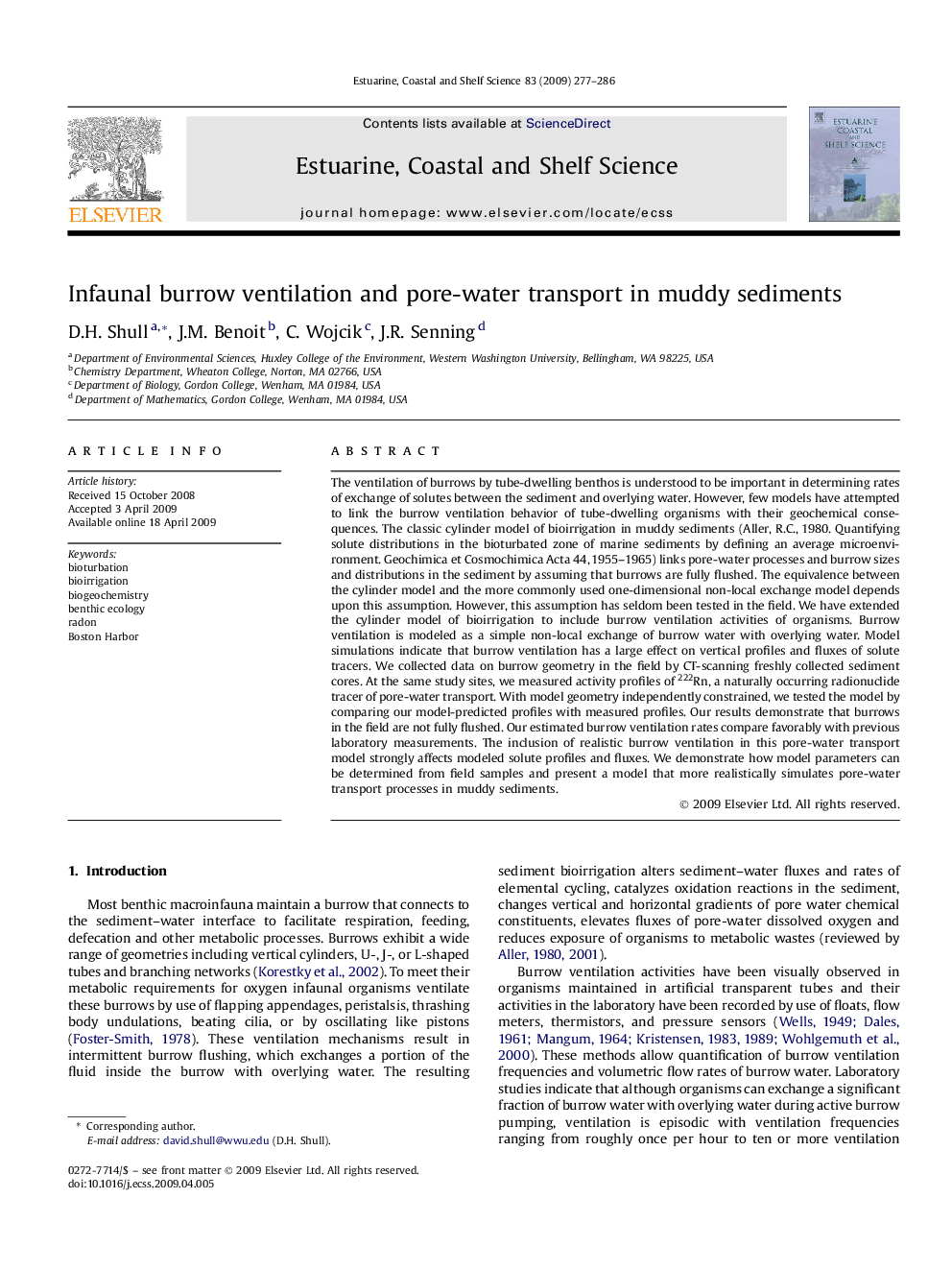| Article ID | Journal | Published Year | Pages | File Type |
|---|---|---|---|---|
| 4541212 | Estuarine, Coastal and Shelf Science | 2009 | 10 Pages |
The ventilation of burrows by tube-dwelling benthos is understood to be important in determining rates of exchange of solutes between the sediment and overlying water. However, few models have attempted to link the burrow ventilation behavior of tube-dwelling organisms with their geochemical consequences. The classic cylinder model of bioirrigation in muddy sediments (Aller, R.C., 1980. Quantifying solute distributions in the bioturbated zone of marine sediments by defining an average microenvironment. Geochimica et Cosmochimica Acta 44, 1955–1965) links pore-water processes and burrow sizes and distributions in the sediment by assuming that burrows are fully flushed. The equivalence between the cylinder model and the more commonly used one-dimensional non-local exchange model depends upon this assumption. However, this assumption has seldom been tested in the field. We have extended the cylinder model of bioirrigation to include burrow ventilation activities of organisms. Burrow ventilation is modeled as a simple non-local exchange of burrow water with overlying water. Model simulations indicate that burrow ventilation has a large effect on vertical profiles and fluxes of solute tracers. We collected data on burrow geometry in the field by CT-scanning freshly collected sediment cores. At the same study sites, we measured activity profiles of 222Rn, a naturally occurring radionuclide tracer of pore-water transport. With model geometry independently constrained, we tested the model by comparing our model-predicted profiles with measured profiles. Our results demonstrate that burrows in the field are not fully flushed. Our estimated burrow ventilation rates compare favorably with previous laboratory measurements. The inclusion of realistic burrow ventilation in this pore-water transport model strongly affects modeled solute profiles and fluxes. We demonstrate how model parameters can be determined from field samples and present a model that more realistically simulates pore-water transport processes in muddy sediments.
